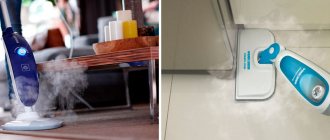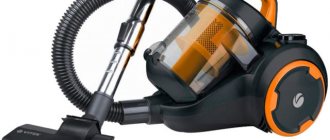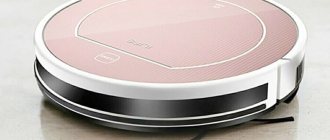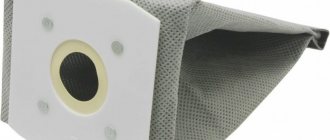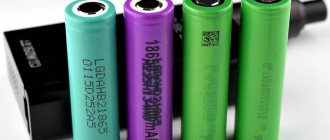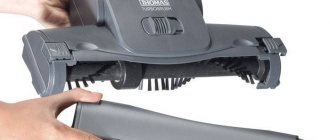- home
- Articles
- Vacuum cleaners for swimming pools. Why are they needed?
To maintain a clean and attractive pool, a set of measures is required. One of them is to clean the bottom and walls of the bowl with a vacuum cleaner. It will help provide effective, quick care that everyone can handle. If you purchase an automatic model, the time spent on caring for the cleanliness of the pool is reduced to a minimum.
Is a vacuum cleaner really necessary?
When equipping their pool with modern water filtration systems, many owners believe that they do not need a vacuum cleaner. This opinion is wrong. When filtering water, it enters the nozzles of the filter unit mainly from the upper and middle layers of the pool. In this case, the bottom and lower layers of water take part in the process to a minimal extent. As a result, it is here that particles of dust, sand, hair, and other contaminants accumulate, which spoils the appearance of the pool and can lead to the formation of an unpleasant coating. The same applies to the walls of the bowl.
Regular use of a vacuum cleaner eliminates this problem and effectively collects debris from the bottom and dirt from the walls, directing them to a filter or a special collection box.
The main advantages of the vacuum cleaner:
- Ease of use;
- The ability to effectively clean all surfaces, including steps, decorative elements, corners;
- Save time.
A high-quality vacuum cleaner quickly pays for itself, because the services of professional cleaners will ultimately cost much more. The ability to use it without draining the water is also a plus, helping to save resources and money.
How to use a pool vacuum cleaner correctly
Both manual and automatic models require minimal user interaction during the cleaning process. To ensure quick and effective cleaning, please read the instructions.
How to clean and vacuum the bottom of a frame pool with a hand-held vacuum cleaner
Although a vacuum cleaner allows you to clean, including the walls, it is most convenient to manually walk over them with a brush before turning the unit on. Then the water is left alone for a couple of hours.
Advice! Before performing work, it is recommended to check the condition of the filters in the pump and, if necessary, clean them.
When the dirt removed from the walls of the frame tank has completely settled, you can begin cleaning the pool with a vacuum cleaner. The procedure is carried out as follows:
- put a cleaning nozzle on the device tube, securely fasten the hose and adjust the length of the handle;
- the brush is lowered to the bottom of the pool, not quickly, but gradually, so that all the air comes out of the hose;
- the vacuum cleaner is connected to the skimmer and the pump is turned on;
- The nozzle is moved gently and slowly along the bottom, collecting large and small dirt.
To properly clean the pool with a conventional manual vacuum cleaner, you should not rush the process. The water unit works best at low speed; with sudden movements, the dirt will only rise from the bottom, and you will have to wait again for it to settle.
During the cleaning process, the vacuum cleaner nozzle must be pressed firmly to the bottom.
Cleaning the pool with a robot vacuum cleaner
An automatic robot vacuum cleaner greatly facilitates the user’s task and minimizes his participation in cleaning. Instructions for using the unit look like this:
- the vacuum cleaner is completely immersed in water, being careful not to stir it up;
- leave the unit turned off for a short time so that the dirt that rises from the bottom settles a little;
- connect the vacuum cleaner to the mains via a grounded outlet;
- put the device into operation via the remote control;
- select an automatic program of the desired duration.
Following a given trajectory, the robot vacuum cleaner will begin to move along the bottom, collecting dirt and at the same time filtering water. Having reached the edge of the pool, the device will either change the direction of movement or begin cleaning the walls, if the model has such a function. At any stage of work, the user can adjust the trajectory of the vacuum cleaner and other settings via the remote control.
You need to turn on the robot vacuum cleaner after going into the water
Some robot models use sensors to independently determine the size of the tank, the type of liquid and the degree of contamination. To operate, you just need to put them in water and turn them on; the device will do the rest on its own. After the robot has finished cleaning the tank, it will need to be unplugged and removed to the surface.
Which to choose
The models of pool vacuum cleaners on sale differ in a number of characteristics, among which the most important is the principle of operation. The cost of the device and the comfort of its use largely depend on this.
Manual
The simplest option is a handheld vacuum cleaner. It consists of a telescopic rod equipped with a handle, a corrugated hose, and a brush with a special design.
There are several types of models that differ in operating principles:
- They are connected directly to the skimmer or vacuum nozzle using an adapter, they work due to the traction force of the filtration system;
- They are equipped with a motor, an electric cable, a waste container, and can work autonomously;
- They work on the principle of a piston and are activated by the movement of the owner’s hands.
The first two are easier to use, but the second is perfect for small bowls that are not equipped with filters.
To clean the pool, simply run a brush over all surfaces. As a result, water along with contaminants will enter the filter, undergo purification and return to the bowl already free of dirt. If a piston model is used, then the contaminants are collected in a special bag, which is attached to the rod. The hand-held device is inexpensive, does its job perfectly, and can be used in pools of any size and design.
Semi-automatic
Semi-automatic models have more advanced brushes that can handle tasks quickly and efficiently. In addition, the design of such models includes a special collection bag for large particles of debris. But the most important difference from manual options is that such a vacuum cleaner can clean the bottom independently, that is, without human intervention. But it will no longer be able to cope with vertical surfaces; they will have to be cleaned manually.
Auto
An automatic robot vacuum cleaner is expensive, but it is capable of performing high-quality cleaning of the pool without the participation of the owner. It is enough to simply set the operating parameters of the device to its software, and it will independently clean the surfaces of the bowl, turning on and off according to a specific schedule. Most models are equipped with remote controls, allowing, if necessary, to quickly reprogram the device depending on the required operating parameters.
Robot vacuum cleaners can be either completely autonomous or connected to the pool’s life support system.
When choosing the first option, it is important to pay attention to the following parameters:
- The length of the electric wire - it must be greater than the length of the reservoir;
- Productivity - the speed of cleaning and resource consumption depend on this indicator;
- Permitted immersion depth;
- Duration of continuous working cycle;
- Types of filters used;
- Availability of additional attachments for working with different surfaces.
How does a pool vacuum cleaner work?
Conventionally, water pool cleaning devices can be divided into two types, manual and automatic. They work according to the same algorithm, although the specifics of the action differ.
How does a handheld pool vacuum cleaner work?
A manual pool cleaner consists of an electric motor, a long telescopic handle and a hose. The device is connected to the skimmer through an adapter and the brush is lowered into the water. The principle of operation of a manual pool vacuum cleaner is that contaminated liquid passes through a tube into the main unit of the unit, where it is cleaned by filters, and then poured back into the tank.
A handheld water vacuum cleaner, like a regular one, can be equipped with crevice nozzles and brushes
The user processes the bottom and walls manually with a vacuum brush. The latter reliably sticks to the surface of the tank and ensures high-quality removal of dirt, which, along with water, also enters the device and is retained in the filtration system.
Important! Although a handheld vacuum cleaner makes cleaning much easier, the procedure still requires personal time and attention. The unit cannot collect garbage on its own.
How does a robot pool vacuum cleaner work?
Unlike a manual device, the robot is completely autonomous. As a rule, such models do not provide a long tube with a telescopic design. The unit consists of a body with one or more brushes for cleaning, and is equipped with wheels or tracks for moving along the bottom.
Robotic devices are purchased for large tanks that cannot be cleaned with a manual unit.
The vacuum cleaner does not even need to be connected to a skimmer; it is enough to connect it to an outlet, since it works using electricity. After this, the device is lowered into the water, and it independently cleans the bottom. Many models are also capable of moving along walls. The user can intervene in the automatic operation using the remote control to turn off the unit or set it to a specific mode.
How to properly use a pool vacuum cleaner
In order for the results from using a vacuum cleaner to be positive and the pool to sparkle clean afterwards, it is important to use the device correctly and not to forget about the features of its use.
Cleaning should always begin with removing from the surface of the water, as well as from the bottom, large debris, toys and other objects that can get into the hose, clog it, and also lead to serious damage.
Before using a handheld vacuum cleaner, you must lower the brush into the water and wait until the system is completely filled with water. Only after this can you begin cleaning the surfaces. Do not remove the brush from the water while working.
The sequence of actions when cleaning any pool, both inflatable or frame, and stationary, should be as follows:
- Stage one is cleaning the walls of the bowl, in which special attention is required to the waterline, that is, the place where the edge of the water comes into contact with the bowl;
- The second stage is cleaning the joints between tiles, corners, and decorative elements;
- The third stage is collecting garbage from the bottom surface.
At each stage, you need to work slowly and carefully, visually dividing the surface into sections and carefully processing each of them. When cleaning the bottom, you should move the brush carefully so as not to stir up the water or raise accumulated sediment. Otherwise, cleaning will not be effective and will have to be repeated after a short time.
If we are talking about a robot vacuum cleaner that does all the work itself, then not much is required from the owner. You just need to carefully read the instructions, make the necessary settings, and the device will clean the pool on its own.
Do you need a vacuum cleaner for a swimming pool?
Even in an indoor pool, which is located indoors or under a canopy, small debris constantly accumulates - dust and particles of human skin. Such contaminants settle at the bottom and form an environment for the development of fungi and pathogenic bacteria. If the pool is located outdoors, it will also attract leaves, insects and dirt carried by the wind.
Cleaning the tank with a net does not give a good effect, and each time draining the water for complete cleaning is too difficult and time-consuming. A very useful device is a pool vacuum cleaner - a manual or automatic unit that allows you to collect large and small dirt in a short time. Its advantages include high quality work; it not only removes debris from the water, but also cleans the bottom, walls, waterline, steps and decorative elements.
The pool vacuum cleaner copes equally well with large debris and plaque.
If the pool is very small and is used on the site several times a season with subsequent complete draining of the liquid, then it is not necessary to purchase a special unit for it. But for a frame tank with constant use, the vacuum cleaner will be in great demand at work.
Manufacturers
Nowadays there are models of vacuum cleaners for swimming pools from different manufacturers on the market. They differ in cost, technical characteristics and operating conditions. Choosing an acceptable option can be difficult, but there are a number of manufacturers whose products are deservedly trusted and in demand.
Among them:
- Intex;
- Emaux;
- Bestway;
- Ultramax;
- Zodiac;
- Dolphin;
- Mountfield;
- Watertech;
But even these manufacturers may have models that do not have the best performance and characteristics. Only the brand should not become decisive when choosing, but there are still more chances to purchase a quality product from a well-known manufacturer.
conclusions
Which vacuum cleaner to choose for a pool can only be decided by its owner, but when making the final choice, you should focus on a number of nuances and preferences.
You should buy a manual vacuum cleaner if:
- A relatively small budget is allocated for the purchase;
- The reservoir is small in volume and shallow;
- The owner has time for regular manual care.
Handheld vacuum cleaners are great for cleaning small private pools and ponds. It is optimal to purchase them if the volume of the bowl does not exceed 40 cubic meters. If the bowl is larger, then it will take too much effort and time to clean. When choosing, it is important to choose the right length of the rod and hose in order to be able to easily clean the most inaccessible places in the future.
The disadvantages of manual models include the fact that the most effective ones must be connected to a pool filtration system, which not everyone has. And their main advantage is the cost, starting on average from 1,500 rubles.
Automatic and semi-automatic vacuum cleaners are an option for pools of large volume and depth. The cost of the devices is noticeably higher, but they can do all the work independently. At the same time, the quality of cleaning in most cases will be higher than that of more inexpensive manual models. If you want the pool to give only positive emotions and be used exclusively for relaxation, then you should choose a robot vacuum cleaner.
How to choose a vacuum cleaner for a pool
The choice of models on the market can confuse a potential buyer. It will be easier to make a decision if you understand exactly what functionality the device needs.
Ideally, a vacuum cleaner should be able to clean all surfaces - the bottom, walls, steps, decorative protrusions, reach each side of the bowl, and be easy to operate and use.
In order not to make a mistake when choosing, you need to take into account a number of nuances:
- The length of the cable, rod and hose must correspond to the size and depth of the pool so that it is possible to clean the bowl completely;
- The volume of the reservoir must correspond to the performance of the device;
- The presence of additional attachments makes the pool vacuum cleaner more functional;
- Brushes made of polystyrene foam, characterized by durability, are considered practical;
- When choosing a robot vacuum cleaner, it is worth checking the ability to move on vertical surfaces, because not all machines are equipped with such a function.
Before choosing a vacuum cleaner for a pool, you need to remember that there are devices both universal and designed for specific types of structures.
For a frame pool with a water filtration system, an inexpensive hand-held vacuum cleaner connected to a skimmer with a hose will be sufficient. If the bowl is small and not equipped with filters, then a model with a piston mechanism will help clean the bottom.
Automatic and semi-automatic devices can operate independently of the filter system, although there are rare exceptions. Such vacuum cleaners are the best choice for stationary bodies of water, which are extremely difficult to care for manually.
Our recommendations
The most affordable option is the WP 240 LS handheld pool vacuum cleaner. This is a simple device that, using an adapter, connects to the pool filtration system and quickly removes contaminants. The kit also includes a net with a bottom collection. The hose will have to be purchased additionally, since it is not included in the kit.
A slightly more expensive option is the Emaux Econom vacuum cleaner. Its complex includes a 2 x 1.8 meter rod, a 9 meter long hose with a diameter of 38 mm, and an Emaux Economy CE302 vacuum brush.
For larger pools, the Emaux Deluxe manual model is ideal. It is equipped with a longer rod of 2x2.4 meters and a heavy-duty flexible hose 10.7 meters long, which will allow you to comfortably clean large bowls. Also included is the Emaux Deluxe CE304 vacuum brush.
To care for a pool that is not equipped with a filtration system, a piston-type vacuum cleaner, for example, the Game 4800-6 PDQ model, is suitable. Its operation is based on the piston principle, so cleaning the pool with this device may require some effort and skill. The main advantage is that there is no need to connect to an electric pump. This is an excellent option for a small inflatable or frame pool, which can be cleaned with such a vacuum cleaner without regularly changing the water.
If you have the opportunity to spend more and want to partially free yourself from caring for your pool, you should consider purchasing a semi-automatic model. The Emaux CE306A SHOWA semi-automatic vacuum cleaner is capable of high-quality vacuum-mechanical cleaning of the pool, connects to a skimmer, and operates easily and silently. The model is suitable for both sunken pools and those installed on the surface.
How to use?
Pool vacuum cleaners can be autonomous (robots) or manual. For proper operation and effective cleaning, you must follow the step-by-step instructions.
Clean with a stand-alone device
An autonomous vacuum cleaner just needs to be programmed correctly , and it will do all the work on its own. The user controls the device from the remote control.
The autonomous device does not require connection to a skimmer or filtration system; it moves freely along the bottom and walls of the bowl.
It is advisable to use robotic vacuum cleaners for cleaning large swimming pools that are difficult to clean manually. At the same time, even modern devices cannot clean blind spots in bowls of non-standard shape.
The device has the following configuration:
- vacuum cleaner and floating cable;
- transformer - power supply;
- cart.
Instructions for use:
- Before work, turn off the pump.
- Release the cable of the vacuum cleaner; it must be completely unwound.
- The power supply is located at a distance of at least 3 m from the bowl.
- Place the movable handle diagonally above the vacuum cleaner and fix it.
- Lower the device into the water.
- To release air from the vacuum cleaner, turn it in different directions and plunge it to the bottom.
- Stretch the cable over the surface.
- Connect the power supply to the outlet (it must be grounded).
- Turn on the device - the indicator will light up and the cleaning cycle will begin.
If the pool is heavily contaminated, several cleaning cycles are carried out.
Manual device
Using a handheld vacuum cleaner, you can clean the bowl through a sand filter or without using it.
Through a sand filter
To clean the walls and bottom using a sand filter, follow these instructions:
Place a suitable attachment on the handle of the vacuum cleaner.- Securely attach the hose to the nozzle of the device, select the optimal length of the handle.
- The nozzle is lowered to the bottom of the bowl.
- Fill the hose completely with water, immersing it in water gradually.
- The second part of the hose is connected to the filter or nozzle.
- Turn on the pumping device and collect debris.
- Move the brush along the bottom slowly, without making sudden jerks, otherwise you will have to repeat cleaning many times.
- After making sure that the bottom is clean, move on to the walls and corners, changing the nozzle if necessary.
- After cleaning, disconnect the hose on each side, pour out the water and dry all the parts.
After cleaning is completed, leave the filtration system running for 3 hours. Then be sure to rinse the sand filter, as it will be very clogged.
Without connection to the filter
If the pool is excessively dirty, then you should not clog the filtration system with this debris.
In this case, it is advisable to move the control valve to the drain position. This way, dirt from the water is removed directly into the sewer, bypassing the filter.
In this case, it is important to ensure that the water level does not reach the minimum mark; to do this, add fresh water in a timely manner.
Instructions for use:
- remove all foreign objects from the water, wipe the walls and bottom of the bowl with a brush;
- fill the hose with water so that no air bubbles enter the pump;
- make sure that the water is in a calm state;
- turn on the vacuum cleaner;
- work slowly with a brush, sweeping along the surface of the bottom and walls, trying to collect all the debris;
- To consolidate the result, the same procedure is repeated.




